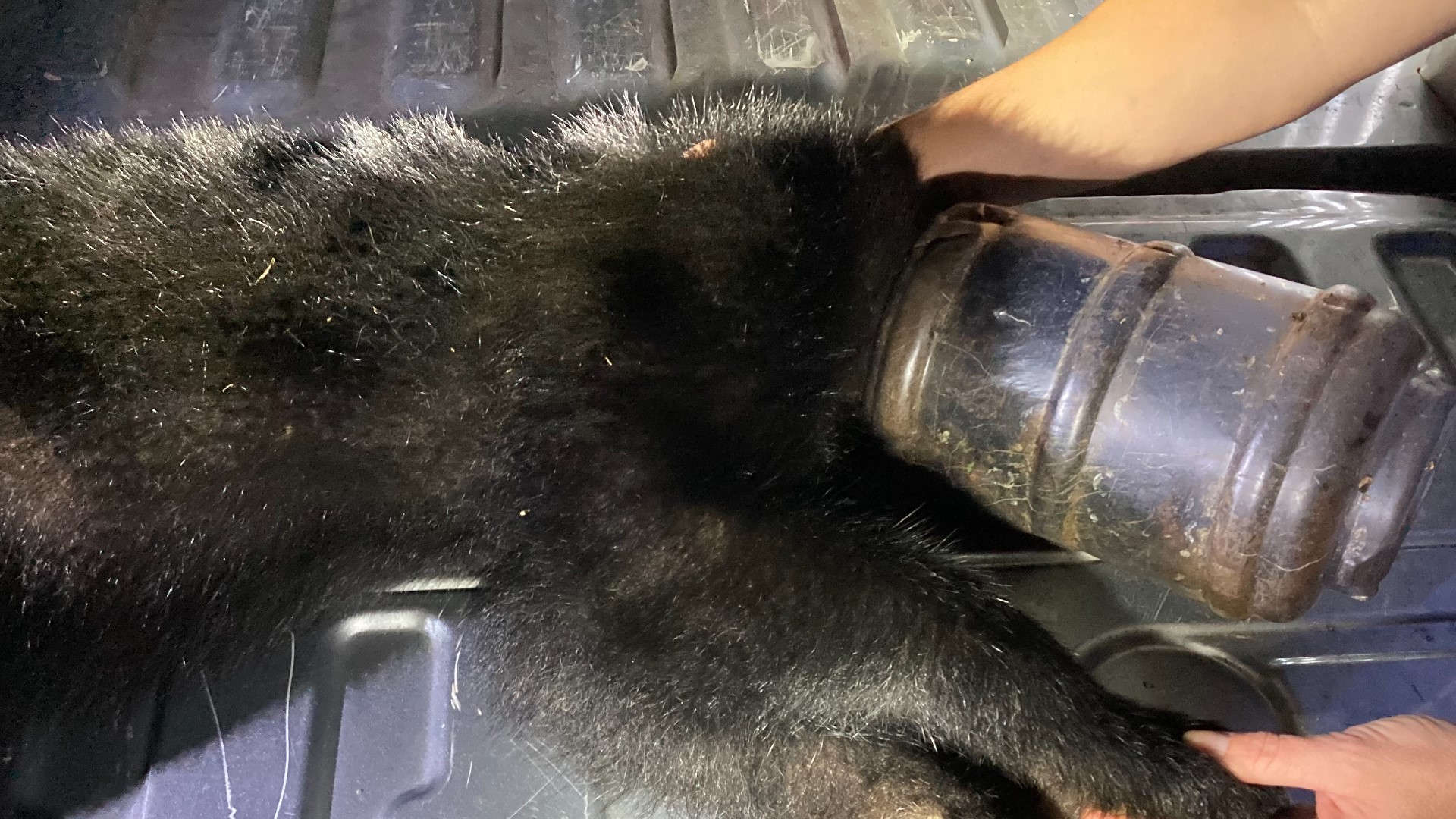A cub was initially spotted wearing the plastic pet feeder on his head.On August 14 in the area of Chilhowee Lake.bear cub’s head for over two months.
trapped on the bear cub’s head for over two months
At a bear rehabilitation facility, a cub who had a pet feeder hooked to his head for over two months is now making a full recovery.
The plastic pet feeder was discovered on the cub’s head for the first time on August 14 at Chilhowee Lake. The cub was given the name Juggles by the Appalachian Bear Rescue. The Tennessee Wildlife Resources Agency said that he was spotted with his mother and three other siblings.
The youngster was lured into a trap by TWRA Black Bear Support Biologist Janelle Musser, however the container prevented the cub from setting off the trap with its mouth. Every time a fresh sighting was recorded, she repositioned the trap and even tried a different kind of trap with a foot plate trigger. But during time, the mother developed a trap-averse nature and proved challenging to pattern.
The cub was on a tree, according to a neighbor who had been monitoring the situation on Tuesday night. Musser was successful in darting the animal and taking the container away.
In an emergency, darting bears in trees is not conventional procedure, according to Musser. “This cub could not continue to survive in such a manner.”
The bear’s ears were squished to his skull, but other than that, he was in very excellent condition despite the container resting on the cub’s head for a considerable amount of time.
Juggles is currently recuperating with ABR, who reports that they think he could only manage a small amount of food and barely enough water to survive.
On Wednesday, the youngster was brought to the University of Tennessee College of Veterinary Medicine for a checkup.
The TWRA urges people to be “BearWise” when it comes to pet food and luring bears.
The major attractants that draw bears into people’ yards, close to their homes, and on their porches are garbage, birdseed, and pet food. The bear cub in this instance was drawn to an automated pet feeder that was set out for dogs or cats.
If individuals don’t adopt BearWise habits, the TWRA said, this won’t be the last time it happens either. These kinds of incidents are more frequent when bears scavenge through trash. Bears are striving to consume more than 20,000 calories per day at this time of year in order to bulk up for the upcoming winter.
The TWRA advised residents in bear area to secure their waste, remove birdfeeders, only feed their dogs seldom, and remove any bowls because bear activity is expected to increase at this time of year.
